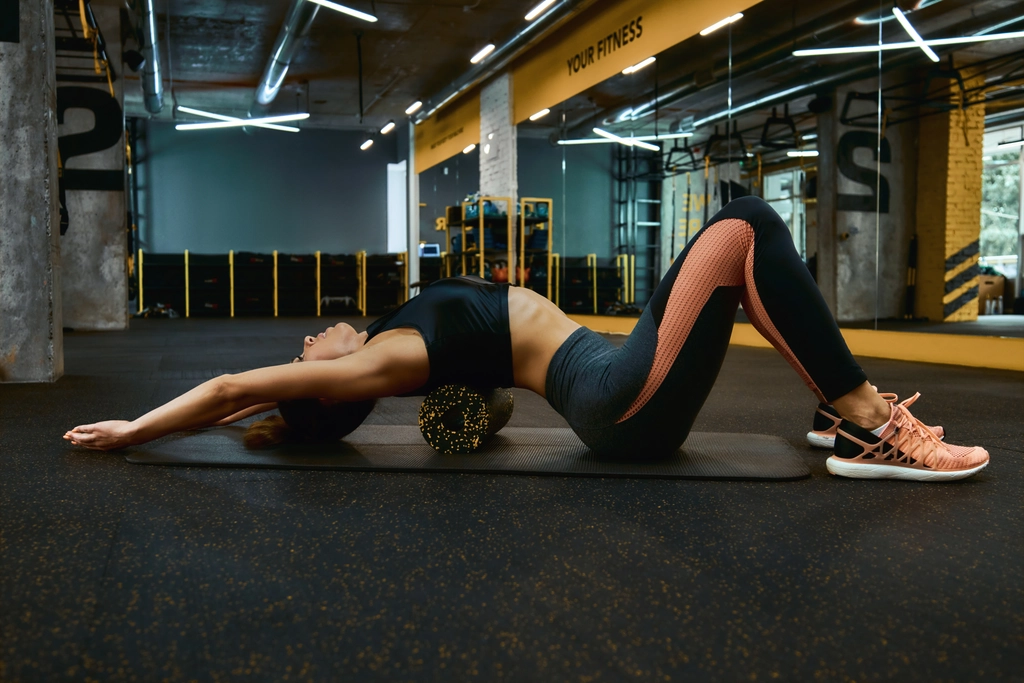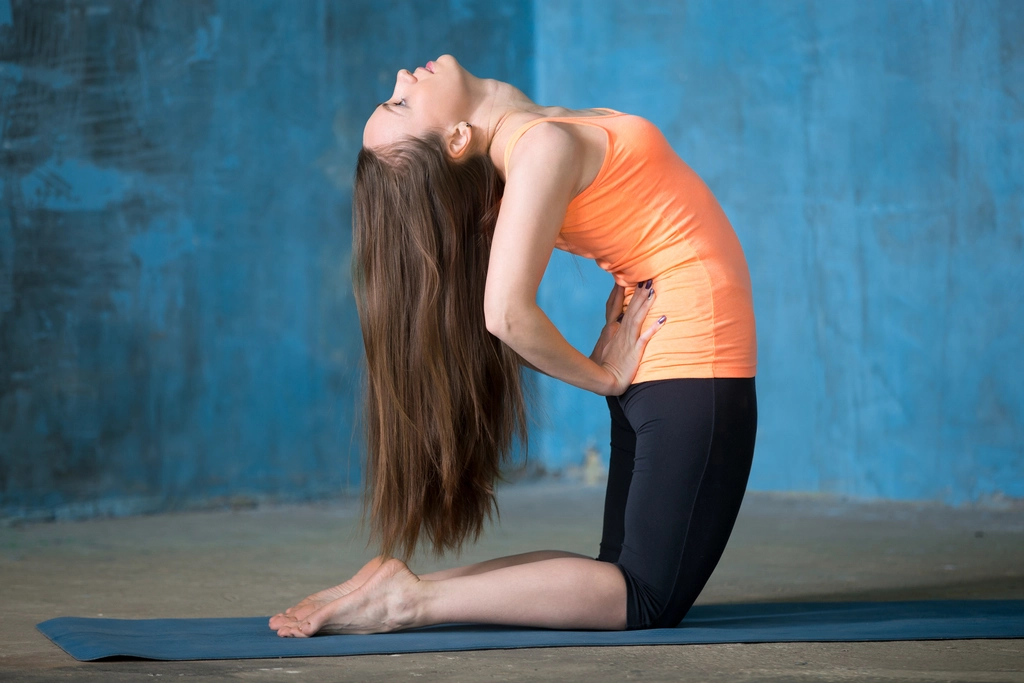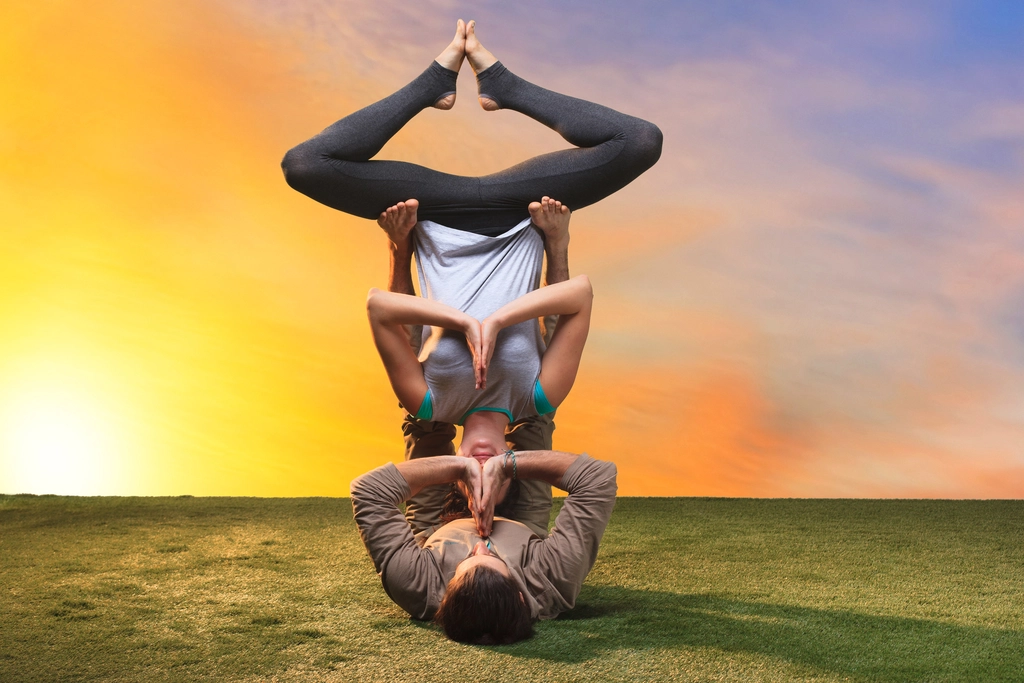Introduction
Over the past few decades, yoga has become very popular worldwide. What started as an Eastern spiritual practice is now a popular way for people of all ages and countries to relax and work out. Now, a new yoga trend is taking over: 18 yoga! This modern take on traditional yoga has many benefits, like building strength, making you more flexible and balanced, clearing your mind, reducing stress, and improving your agility. Plus, it looks cool. In this blog post, we’ll talk about 18 yoga in more depth to help you decide if it might be a good fit for your health and exercise goals. Read on to learn why 18 yoga is so popular with yogis worldwide!
What is 18 yoga, and why has it been so popular in recent years
So, what does 18 yoga mean? Traditional yoga poses are mixed with gymnastics and acrobatics in this new style of yoga. This combination makes for a fun and difficult workout that makes your body stronger and helps you focus, balance, and coordinate your movements better. The name “18 yoga” comes from Kino MacGregor, who started it and is a famous yoga teacher and social media figure. She started 18 yoga to change things from the usual yoga scene and bring a more fun and modern take on the practice.
What makes 18 yoga different from other types of yoga, however? In most styles, the moves are slow and controlled. 18 yoga, on the other hand, uses faster-paced sequences that require more strength and agility. Using hoops, bars, and straps as props makes the practice more fun and creative.
The fact that 18 yoga has gained so much popularity in recent years is no surprise. Its unique mix of traditional yoga and gymnastics makes it very appealing. Not only do experienced yogis like it because it changes their routine but so do new yogis who like it because it’s fun and difficult.
Why is 18 yoga so popular?

It’s a full-body workout
18 yoga works out many muscle groups all over the body, unlike traditional yoga, which focuses mostly on the core. Every move, from arm balances to inversions, will make you use your whole body, which will help you get stronger and tone your muscles.
It improves balance and coordination.
For the athletic parts of 18 yoga, you need to be very coordinated and have a good balance. By adding these moves to your practice, you’ll get stronger, and your mind and body will feel more connected.
It’s a great stress reliever
18 yoga stresses deep breathing and awareness, just like all other types of yoga. This helps lower your stress and anxiety, so after each lesson, you feel calmer and more at ease.
Benefits of doing 18 yoga
People have known for a long time that yoga can change people’s lives. It can help people become stronger and more flexible but also help them find inner peace and improve their general health. The benefits of yoga can be even greater for young people than for other yoga practitioners. Stretching and holding poses can help you become more flexible, and strength-training exercises can help your muscles get bigger and more toned. More importantly, doing yoga regularly may lead to a greater understanding of oneself and mindfulness, which can help one connect more deeply with others and themselves. Overall, 18 yoga has many benefits beyond just getting fit, making it a great addition to any wellness habit.

Increased flexibility
Your general flexibility and range of motion can benefit from 18 yoga because of its emphasis on stretching and deepening the poses.
Improved balance
The consistent activation of core muscles and the completion of hard postures can improve one’s balance and stability, which are crucial for performing day-to-day tasks.
Stronger muscles
In 18 yoga, using various supports and acrobatics helps to increase strength in diverse muscle groups, ultimately resulting in a more toned and robust body.
Better coordination
You’ll begin to notice an improvement in your coordination and body awareness as you make further progress in your 18 yoga practice.
Enhanced mental clarity
Clearing your mind, lowering your tension and anxiety levels, and sharpening your mental focus can all be accomplished by combining the practice of mindfulness with physical activity and deep breathing.
Types of poses included in an 18 yoga session
Regarding yoga, there is no shortage of opportunities to stretch, strengthen, and push your body to its limits. Even while each pose has its advantages, beginners, in particular, should use extreme caution when performing specific poses. If you are new to yoga, it is essential that you familiarize yourself with the various positions and learn how to practice them in a way that minimizes the risk of injury. In a session taught by 18 yoga, you may anticipate practicing various postures, ranging from standing and seated postures to inversions and backbends. The following are some of the most well-liked kinds of yoga classes offered at 18 yoga:

Vinyasa 18 yoga
This is not your typical vinyasa flow class; instead, it incorporates acrobatics aspects, making for a more dynamic and taxing workout.
Acro Yoga
This session concentrates on acrobatics and partner poses, as the name suggests. Because of this, it is an excellent choice for those individuals who want to add a social component to their 18 yoga practice.
Aerial 18 yoga
Students in this session supplement and deepen their 18-yoga practice by suspending themselves in aerial silks or hammocks. Strength and flexibility can be improved in a way that is enjoyable and demanding.
Power 18 yoga
This class includes a more strenuous approach, integrating advanced postures and movements with a high energy level to provide a complete workout for the body.
Restorative 18 yoga
This session is about unwinding and getting your energy back, just like the name says. It supports and deepens the postures with props like bolsters, blankets, and straps, allowing for a greater sense of relaxation.
Whatever kind of yoga class you pick will help you and can be adjusted to fit your needs and skills. If you want to find the right class, try a few. Remember that 18 yoga is about having fun while pushing yourself and making new friends. Don’t be afraid to try something new and leave your comfort zone. It will be good for your body and mind. Keep working on your skills, improving, and shining on the mat!
Different poses used in 18 yoga – what each pose does and how to perform it
Warrior II (Virabhadrasana II)
This pose makes the legs, hips, and shoulders stronger and more flexible. It also helps with balance and concentration. To get into this pose:
- Start by standing up straight with your feet hip-width apart.
- Make a 90-degree turn with your right foot out to the side. Keep your left foot looking forward.
- Your shoes need to be straight.
- Keep your right knee bent and right above your ankle.
- Stand with your back straight and your arms out to the sides. Your hands should be facing down.
- Look at your right hand and hold for a few breaths. Then, switch sides.
Crow Pose (Bakasana)
This difficult arm balance pose strengthens the core, arms, and hands and helps you focus and concentrate better. To get into this pose:
- Stand with your feet hip-width apart and squat down.
- Spread your hands out shoulder-width apart on the ground in front of you.
- Put your knees on top of your upper arms, as close to your shoulders as possible. Lift your hips.
- Put your weight on your hands and lift your feet off the ground.
- Keep your eyes forward and hold for a few breaths. Then let go and go back into a squat position.
Plank Pose (Phalakasana)
This basic yoga pose makes you more stable and balanced while strengthening your core, arms, and legs. To get into this pose:
- Put your hands shoulder-width apart and your body in a straight line to start the push-up.
- Hold the pose for a few breaths and use your core muscles.
- You can change this pose by getting on your knees or making it harder by pulling one arm or leg off the ground.
Always pay attention to your body and change your poses as needed. Refrain from pushing yourself past what you can handle. 18 yoga will soon help your strength, flexibility, and general health if you do it regularly and allow yourself time to see results. Remember to keep trying new poses and enjoy the journey as you use yoga to make your mind and body healthy.
Tips on where to find classes and how to get the most out of your practice:
Check the schedules of the yoga studios and gyms in your area to see if they offer yoga classes, and consider going to several different studios or gyms to find the one that best suits your needs.
- There are a variety of online platforms that also provide virtual 18-yoga classes, which makes it simple to practice from the convenience of your own house.
- Be bold and ask your yoga-practicing friends or family members for ideas; they could know of some outstanding yoga sessions or teachers that you should check out.
- You should look for lessons that are particularly designated as “beginner-friendly” if you are just starting in the discipline so that you can ease into it without feeling overwhelmed.
- To expand your knowledge of 18 yoga and improve your skills, you should participate in the workshops and special events organized by studios and instructors.
- Remember that to show changes in your practice, it is necessary to maintain constant practice and go to lessons regularly.
How to stay safe while practicing 18 yoga
When practicing 18 yoga, it is essential to maintain good form and breathing methods to protect yourself from harm and get the most out of your practice. This is true of any other sort of physical activity as well. Here are some safety precautions to take while using the mat:
- Always get warmed up before you start practicing something. This might involve light stretches, motions, or even a couple of sun salutations.
- Remember what your body tells you, and avoid going beyond your capabilities. If a particular movement or stance makes you feel uneasy, ease up on it or adjust it.
- Engaging your core muscles, maintaining a neutral spine position, and equally distributing your weight via your hands and feet will help you maintain perfect alignment while holding postures.
- Maintain a deep and even flow of breathing throughout your whole practice, and let your breath guide you into and out of each pose.
- Maintain your level of hydration by drinking water before and after your workout, as well as taking frequent breaks during lengthier workouts to sip water.
- You may keep yourself safe while practicing 18 yoga and reaping its numerous advantages, including improvements to your physical and mental health, if you follow the advice in this article and practice with awareness and mindfulness.
An overview of the different styles of yoga and what they offer
As was just discussed, there are many distinct types of yoga, each taking a slightly different approach and offering a different set of advantages. The following is a quick rundown of some of the more frequent styles that you might come across:
Hatha
This form of yoga moves at a more leisurely pace and places more of an emphasis on stretching and gentle movements. Because of this, it is an excellent choice for beginners and those looking for a more relaxed practice.
Vinyasa
Vinyasa is a more energetic type of yoga that involves flowing movements and synchronized breathing. It is excellent for building strength as well as boosting cardiovascular health.
Ashtanga
Ashtanga is a rigorous and physically demanding practice that follows a predetermined number of postures connected with breath. As such, it is an excellent choice for individuals searching for a hard workout because it follows a set sequence.
Bikram/Hot Yoga
This form of yoga is performed in a room heated to a set temperature and adheres to a predetermined sequence of 26 positions; therefore, it is an excellent choice for individuals who wish to perspire and cleanse their bodies.
Yin
A form of yoga that involves moving at a more leisurely pace and concentrating on holding passive stretches for extended periods to reach deeper connective tissues and improve flexibility.
These are just a few examples of the many styles of yoga available, and there are also variations and hybrids of these styles. Always try different classes and find what works best for you and your body.
The importance of restorative yoga for stress relief
The fast-paced nature of today’s world has made stress an everyday occurrence that is frequently inescapable. This is when the practice of restorative yoga comes in handy. This method emphasizes relaxation and repairing both the body and the psyche through slow, deep breathing and meditation in addition to soft positions. Those dealing with high stress or anxiety levels may benefit from it significantly more than others.
Props like blankets, bolsters, and blocks are frequently used in restorative yoga classes to support the body in various postures. This helps students experience a profound relaxation and release while practicing the poses. The release of stress in the body and calming the mind are both potential benefits of doing so.
In addition to its beneficial effects on the body, restorative yoga positively affects the mind and emotions. It is possible to reduce feelings of anxiety and improve one’s overall well-being simply by doing things more slowly and concentrating on the here and now.
Therefore, the next time you feel overwhelmed or worried, consider enrolling in a restorative yoga session so that you can find some peace and revitalization for yourself.
Conclusion
To sum up, in all its many types, yoga is a very helpful way to improve your health and wellness in general. It’s a journey to learn more about yourself that can also help you relax and find inner peace. It makes you stronger, more flexible, and better at balancing. Safety is the most important thing on this trip. The best way to get the most out of yoga while minimizing the risk of harm is to practice with perfect form and focus. There are many different types of yoga, each with its benefits. This means that each person can make their yoga practice fit their needs and preferences. You can get a hard workout, a gentle stretch, or a moment of peace in the middle of a busy day through yoga, based on what you’re looking for. Always listen to what your body is saying you, try new styles, and most of all, pleasure in the process.
Frequently Asked Questions
Q1: I’m new to yoga. Which style is best for beginners?
Hatha yoga is often suggested for people new to yoga because it moves slowly and focuses on basic poses. On the other hand, the “best” style is subjective and rests a lot on the person’s health and personal taste.
Q2: Can I practice yoga even if I’m not flexible?
Of course! Anyone can do yoga, and it gets easier to be flexible over time. Remember that the point is not to touch your toes but to learn something on the way down.
Q3: What should I wear to a yoga class?
Comfort is very important. Ensure your clothes make it easy for you to move around.
Q4: How often should I practice yoga?
This depends on your plans and objectives. For bigger changes, try to do it three times a week, but even once a week can help.
Q5: Is it okay to eat before practicing yoga?
When you do yoga, it’s best to be hungry. If you have to eat before, eat something light and give your body at least two hours to digest it.




